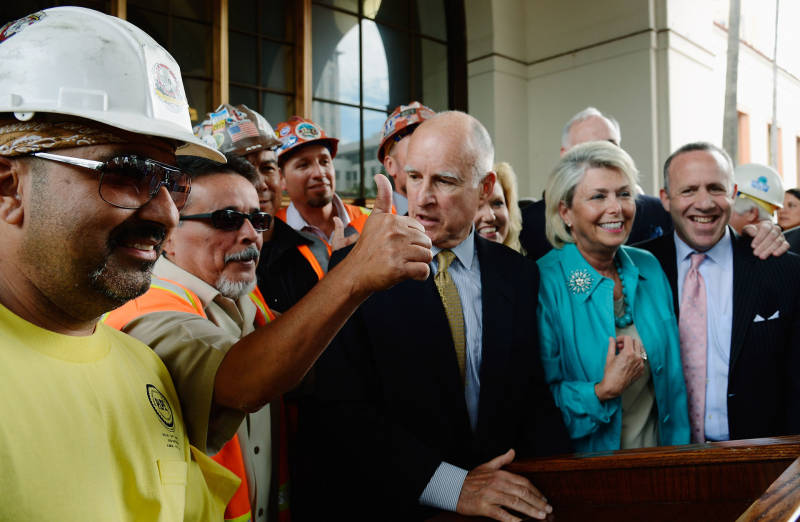"The authority may be able to accomplish these objectives at some point in the future. This project is an ongoing, dynamic, changing project," Kenny wrote.
Voters have approved $10 billion in bonds for what would be the nation's first high-speed rail line, and California has secured another $3.2 billion in federal matching funds. In addition, the project will receive money each year from the state's greenhouse gas emissions fund. The amount will total $500 million this year.
That funding leaves it far short of its $64 billion price tag, and state lawmakers and the Republican-controlled Congress have balked at providing more money.
Still, backers believe segments of the project can be operating within the next decade.
Dan Richard, chairman of the board that oversees the rail authority, expressed relief at the judge's ruling. He said "a great myth" has developed that the system being built is different from the one voters approved.
"It's totally and completely false," Richard said at a board meeting Tuesday. "What we are building is exactly what the public voted for: a fully electric, 200-plus mile-per-hour train that can operate without a subsidy that is designed to operate in two hours and 40 minutes between our great cities of Los Angeles and San Francisco."
Plaintiffs argued that plans for the bullet train have strayed far from the promises made to voters, particularly on trip times, ridership and maintenance costs.
Plaintiffs' attorney Stuart Flashman said his clients would be evaluating their next steps.
"Though the high-speed rail authority may have won this round, the ruling ... provides ominous signs about the authority's future use of bond funds," Flashman said in an email.
Voters were told the trains would whisk travelers from San Francisco to Los Angeles in two hours and 40 minutes, and the system would operate without a government subsidy. Opponents say neither is possible under current plans.
It was also pitched as a stand-alone system that would not have to share tracks with slower commuter rail lines.
Since then, plans have changed repeatedly as state officials made political compromises, including the decision to share tracks with commuter trains in some sections.
Gov. Jerry Brown's administration lowered the cost estimate to $64 billion in February as part of a new proposed business plan that upended plans for the rail line.
The change, which still requires board approval, would send tracks from the Central Valley north to the San Francisco Bay Area instead of south as planned since 2012.
It also calls for a 250-mile segment from San Jose to north of Bakersfield to begin operating by 2025.
